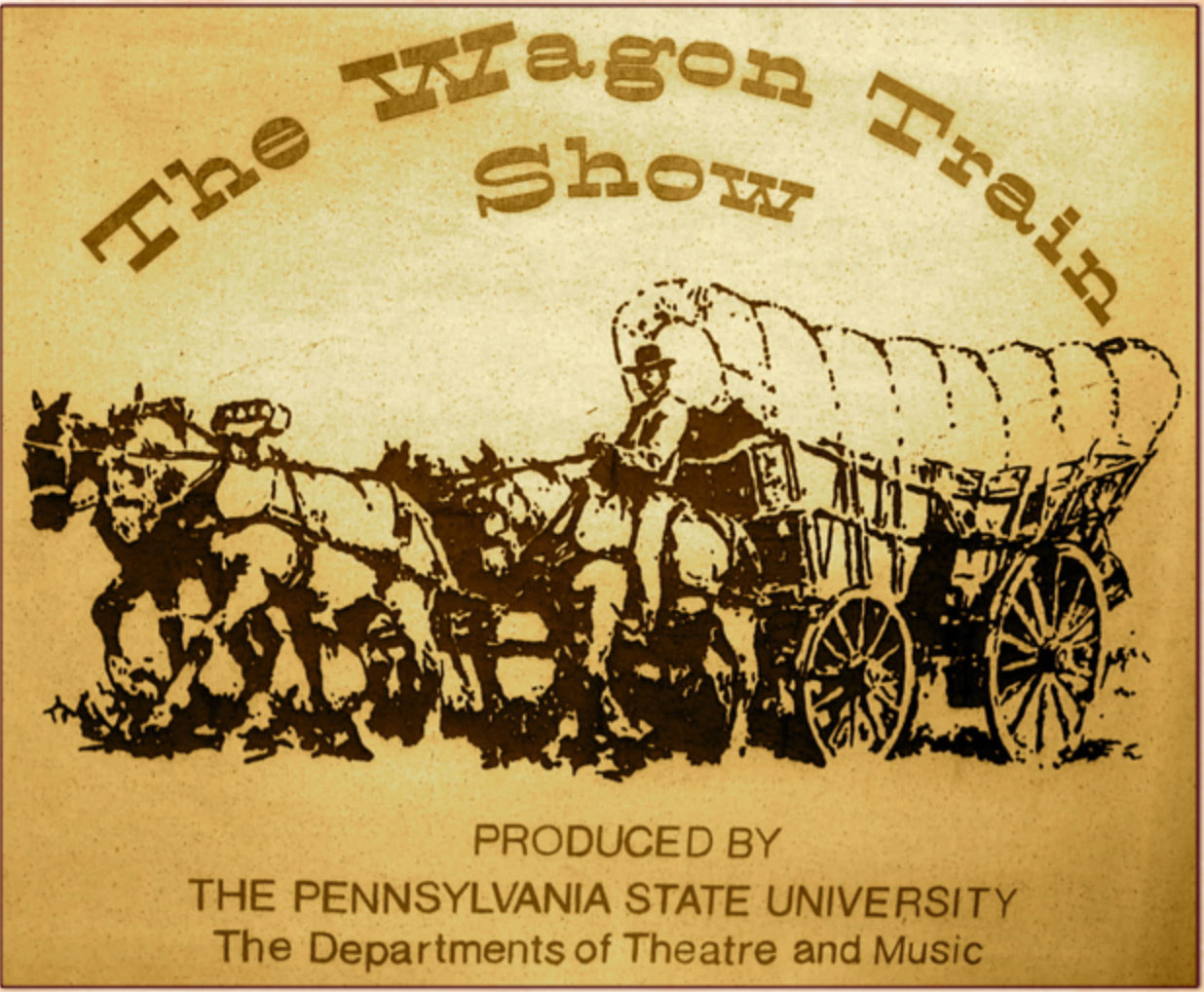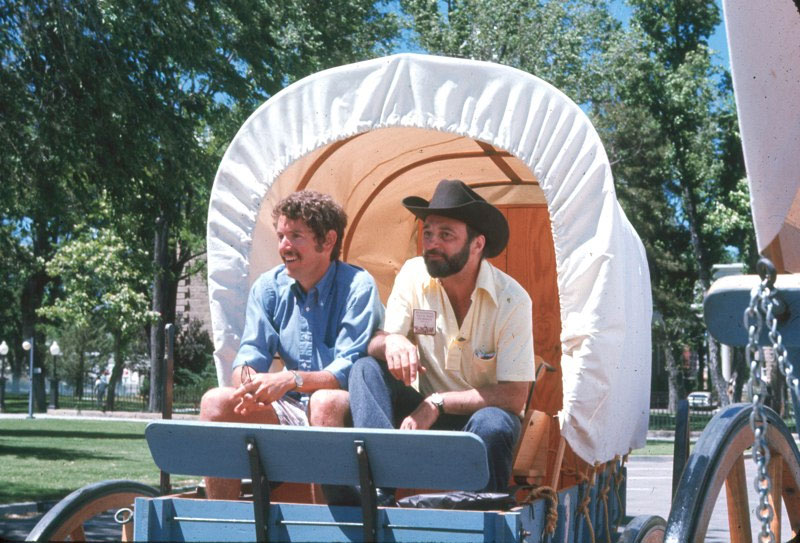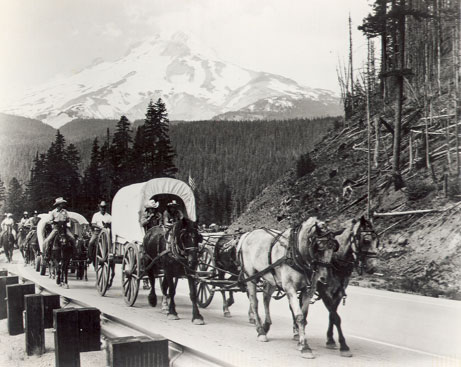Wagon Train Show 1976
Wagon Train Show Reunions: 30th 2006 and 35th 2011
Wagon Train Show 50th Anniversary 2026

Throughout this project, I have been wondering where to put this unparalleled piece. It crosses many genres – musical, cantata, song cycle, commemoration, revue – but in the end it is a unique entity, a sui generis musical-historical-celebratory-touring show.
So to honor its uniqueness, and its special place in my heart, the Wagon Train Show has earned a page unto itself here, with links to other excellent sites that can fill you in on all the details of, to use its official name, The Pennsylvania Bicentennial Wagon Train Show.
It has also been given pride of place since 2026 will mark the Semiquincentennial, that is, the 250th Anniversary of our country’s founding, as well as the 50th Anniversary of the Wagon Train Show itself. Its central message and lessons are as relevant today, if not moreso, than they were in 1976. I know all of my collaborators would agree.
How the Wagon Train Show came to be.
1976 marked the two-hundredth anniversary of the signing of the Declaration of Independence, so it was our nation’s bicentennial birthday. To commemorate and celebrate, Pennsylvania funded, constructed and presented 50 Conestoga Wagons, one to each state in the Union. These various wagons would join up to form companies of wagon trains - all heading across the country on trails that on the Fourth of July 1976 converged at Valley Forge, PA, there to be welcomed and greeted by President Gerald Ford and PA Governor Milton Shapp.
More wonderfully, the wagons were designed to serve as horse-drawn stages, where an entertainment with music, song and dance would be performed each night for the citizens of the city or town where the train rested for the night.
The Lieutenant Governor of Pennsylvania, Ernest “Ernie” Kline (1929-2009), had commissioned a team to write the show. But when that plan did not work out, he approached Penn State’s Doug Cook, Head of the Theatre Department, and requested a show, created from scratch, that would tour the country with the wagon trains. One other small thing: the deadline for the first preview was in two weeks.
Doug Cook asked Roger Cornish, Don Tucker, and me to write the show and he asked Manuel Duque to stage it. So in May 1975 we conceived and wrote a 40 minute show; we held auditions and cast the performers; we rehearsed the show and we got it ready to present to the Lt Governor at the Harrisburg Farm Show at the beginning of June. Then followed the premiere at the launch of the entire project on July 4, 1975 at a community fish fry on the shore of Puget Sound in Blaine, Washington in the far northwestern corner of the country.
The Wagon Train Show is the best documented of all the productions I have been associated with for two reasons:
View “Eastward Ho!” Part One.
View “Eastward Ho!” Part Two.
View “Eastward Ho!” Part Three.
2. The great website that was built for the 2011 35th Anniversary Reunion. View the Wagon Train Show Webpage.
Read more about the 30th and 35th Anniversary Reunions in 2006 and 2011 at the end of this page.
Wagon Train Show
Music by Bruce Trinkley and Don Tucker. Lyrics by Roger Cornish (1934-2000) and Don Tucker.
Commissioned by the Commonwealth of Pennsylvania.
Premiere: Blaine Marine Park, Blaine, Washington, July 4, 1976.
Produced by the School of Music, Robert Baisley (1923-2009), head; and the School of Theatre, Doug Cook (1930-2024), head, under the auspices of the College of Arts and Architecture at Penn State.

Directed by
Manuel Duque (1929-2016). Executive Producer, Doug Cook. Set designed by Douglas Maddox. Costumes designed and built by Montez King (1932-2013). Technical direction by Vonnie and Del Boarts (1938-2010). Production Stage Manager, Jerry James.
Performed by 5 companies in simultaneous United States tours. 2000-plus performances (1975-1976) culminating in the Valley Forge Bicentennial Encampment, July 4 - August 15, 1976.
Click here to view the Wagon Train Show webpage with chapters on everything you could want to know about the project.
Home. History. Creators. Performers. Lyrics. Songs. Photos. Press. Links. Reunion (2011). Memoir. Credits.
View the complete Piano Vocal Score with introductions to the songs.
Listen to the Original Company Number 4 perform the entire show (February 1976).
Performers: Kathleen Beck (Kate Beckman), Allison Brush, Carol Philips, Mel Black, Ron Byron, Peter Hennings, William Wood. Charles (Chip) Purchase, Stage Manager.
Click below to view the scores and midi realizations to individual songs.
2. Ordinary People View the score. Listen to midi.
3. Welcome Stranger View the score. Listen to midi.
4. I Remember a Parade View the score. Listen to midi.
5. We Haven’t Discovered America Yet View the score. Listen to midi.
6. Arlington View the score. Listen to midi.
7. Mail-Order Bride View the score. Listen to midi.
8. Harvest Due View the score. Listen to midi.
9. Blank View the score. Listen to midi.
10. Never View the score. Listen to midi.
11. Let’s Hear It For View the score. Listen to midi.
12. I Leave You View the score. Listen to midi.
Wagon Train Show

Arranged for Chorus and Piano with optional guitars and bass in anticipation of the 250th Anniversary (Semiquincentennial)
Several of the songs from the production leant themselves to versions for the Glee Club, as well as for high school SATB choruses. So in looking forward to our Republic’s 250th Anniversary celebrations in 2026 – as well as the 50th Anniversary of the Wagon Train Show itself, I am pleased to share the SATB arrangements and hope that they will be performed by choirs wanting to mark the 250th Anniversary of 1776 (as well as the 50th Anniversary of the Wagon Train Show itself).
Please note that the listen links are to the TTBB versions sung by the Glee Club from LPs in the 1970s. These selections provide an overview of the original show. They were arranged for high school singers and their audiences wishing to relive and celebrate our nation’s history. Several of the songs are also sobering reminders of what previous generations have sacrificed for our freedoms today. And Harvest Due reminds us of what is still to be accomplished. (Please contact me for TTBB versions of the songs.)
View SATB and Piano score. View TTBB and Piano score. Listen to the TTBB version sung by the Glee Club.
The second song in the show addressed the prime audience of the tour, ordinary American citizens. It was also my contribution to the “soft rock” style of the time, made popular by such groups as The Mamas and the Papas, my favorite group.
Tell me who can we count on?
What heroes will stand in their stead
For the two hundred years up ahead? . . .
Ordinary people, look around.
You'll love who you see.
Ordinary people, who are you, you, you and me.
2. Arlington
View SATB and Piano score. View TTBB and Piano score. Listen to the TTBB version sung by the Glee Club.
This powerful ballad, with a touch of jazz waltz, was at the center of the show. It conveys the obligation we all have to honor those who have made possible the freedoms we enjoy today.
Arlington, Arlington,
In a world on the run
You remind us of all that we are
And as night shadows fall In your flame we recall
Every father and son,
Arlington.
3. We Haven’t Discovered America Yet
View SATB and Piano score. View TTBB and Piano score. Listen to the TTBB version sung by the Glee Club.
This song pays honor to the folk song tradition of singing of the open road and exploring the country, which is exactly what the Wagon Train Show troupes were doing.
Train, train, move along, make the road bed sing,
Truck, truck, trucking by, jet plane do your thing,
Highway, country road, showing us the way
To see the U. S. A.
View SATB and Piano score. View TTBB and Piano score. Listen to the TTBB version sung by the Glee Club with Doug Smith (1950-2002) soloist.
This,the central anthem of the show, reminds us all that although our predecessors accomplished much in establishing our democracy, there is still work to be done by us and our children to perfect and realize the dream.
Our parents planted freedom and worked to make it green.
They tried to give us something the world had never seen.
But they're not here anymore. We're standing all alone.
Courage, justice, freedom,
We must harvest on our own.
View SATB and Piano score. View TTBB and Piano score. Listen to the midi.
A closing message in the style of a power ballad, both sober and inspiring, reminds the audience of the gifts we have been given through the seasons. Roger Cornish’s beautiful and meaningful lyrics conclude with the following final stanza:
From the winter of my life
I give you peace;
Where there is no word for war;
Let tomorrow come,
You will have your spring
When the guns are silent
Heaven can be heard.
I leave you the Bill of Rights:
Give it your trust;
It won't deceive you.
Now in the winter of my life
I leave you.
Wagon Train Show
35th Anniversary Reunion, July 4, 2011.
Those of us who have directed or performed in high school, college or community musicals often pledge to our fellow cast members that the bonds and friendships we have formed during rehearsals and performances will be remembered forever. But as we grow older, raise our families, continue our careers or move on to other occupations, we lose touch with those dear theatre friends and colleagues.
However the performers on the Wagon Train Show didn’t just share a show together. They lived together (some for a summer and others for a year or more) bunking up in two Winnebagos, one for the guys, another for the gals. Continually on the road so that cast and crew became the only constants: they became very close friends.
So as the 30th Anniversary approached in 2006, many of the approximately 40 performers suggested a reunion. I worked along with Jerry James, the first and longest lasting of the Wagon Train Show stage managers, to track down the original cast members. A lot of them were game to come to Penn State, reunite, rehearse and perform the show – in the Recital Hall of the Music Building, and then take the show “on the road” again to Fort Roberdeau, the nearby Revolutionary War Era fort, just north of Altoona, which at sunset bore an uncanny resemblance to the fields of Valley Forge where we had gathered that summer thirty years ago. Many stories and memories were shared of cast members present and absent, and also of the many private citizens, “ordinary people,” who had brought their own wagons and horses (some brought their families) and traveled with the Wagon Train, swelling its ranks as it made its way back to Valley Forge.
